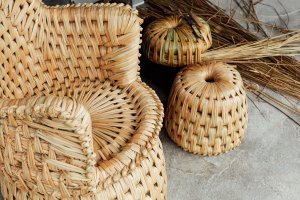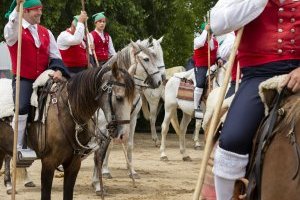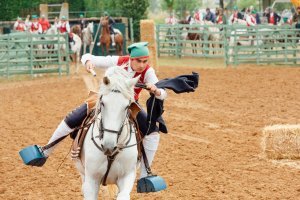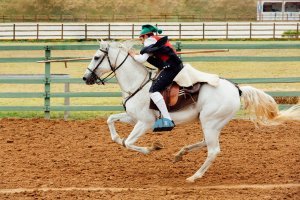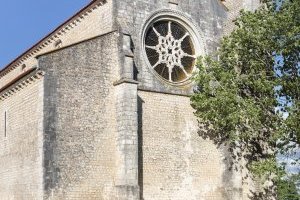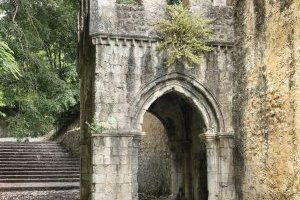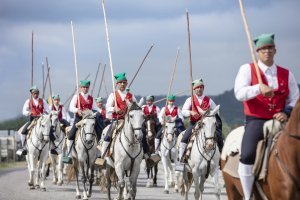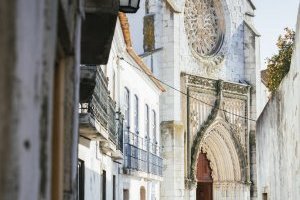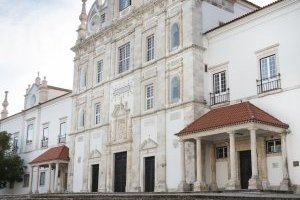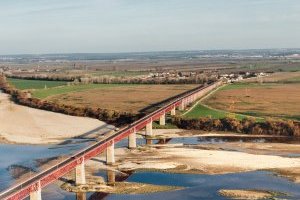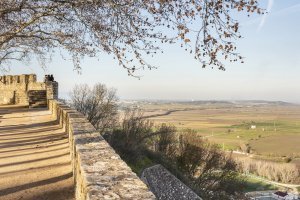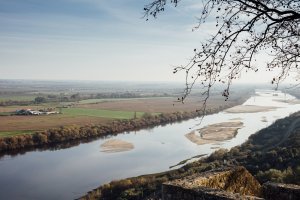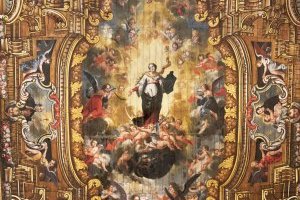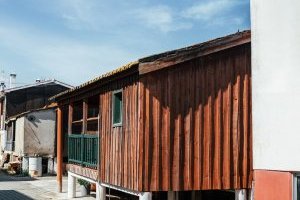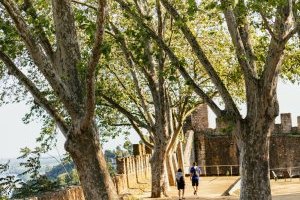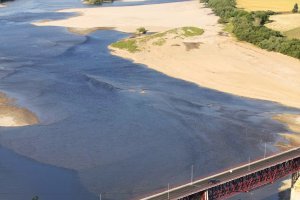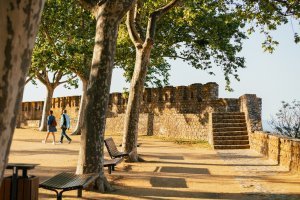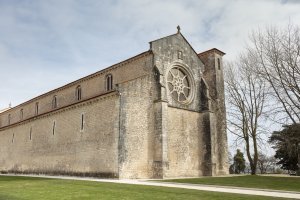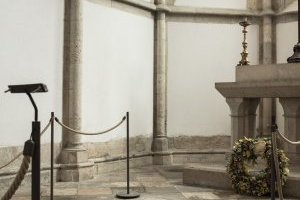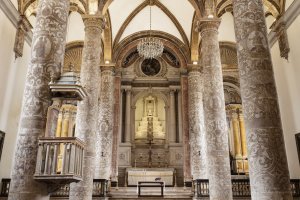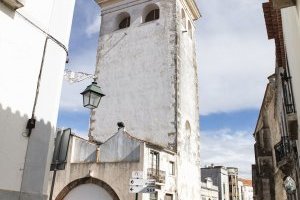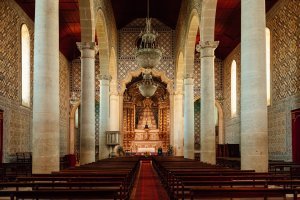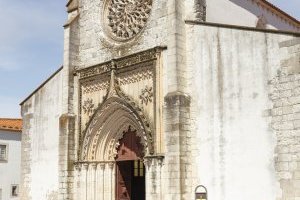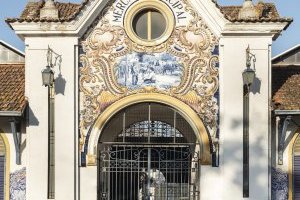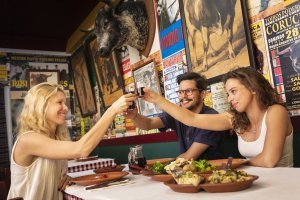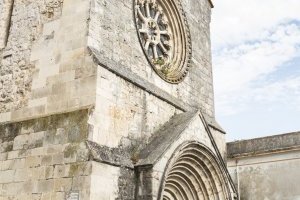FROM THE SANTARÉM PLATEAU TO THE TAGUS RIVER
Distance: 6.2 km; Duration: 3h
Degree of Difficulty: Moderate.
Trail departure point: Jardim da República
Coordinates: 39.238493, -8.685847
This trail helps you discover the thousand-year-old relationship between the landscape and the life of this historic city.
At the starting point, located at Jardim da República, there is easy parking and several establishments offering cafeteria and restaurant service. Be sure to visit the municipal market, located next to the garden; its ceramic tiles will take you back in time through the landscapes and the lives of the people depicted here in their daily routines.
Starting at the bandstand located in the middle of the garden and with the car park on your left, go straight ahead, crossing the entire garden, until you reach the churchyard of the old São Francisco Convent. Its church, classified as a National Monument, is considered to be the most beautiful manifestation of Gothic art in Portugal prior to the construction of the Batalha Monastery. The most obvious analogies would appear to be works commissioned by the former rulers of Aragon, which is now part of modern-day Spain. Facing the entry portico, go down the stairs on your right and immediately turn left; then keep going straight ahead for some 400 metres. On your right, you can see the Santa Clara Church, classified as a National Monument; a few metres ahead, turn right and go straight down the wide staircase that ends at the Santa Clara road. Go down to the Santarém Brook. This is an old road that is now asphalted; traffic is one way uphill, so extra care is needed.
After some 400 metres, when you begin to see the houses on both sides of the road, take the first right, going down a staircase that ends next to the Santa Cruz Square, facing the Santa Cruz Church, which is classified as a National Monument. Cross the road to your left; do not take the street in front of you but, rather, Santa Cruz Street. Keep going and, once you have safely crossed the railway line, take the first left, where there used to be an old door in this part of city wall. Now take the next right and then left again, and go all the way to the end of Direita de Palhais Street until you reach the square and the fountain of the same name, and the Alcorce medieval bridge.
This entire area is known as Santa Iria da Ribeira de Santarém and it is very old, with two parishes that date back to the late 12th century. At the end of the street, turn right, cross the road and turn right once again; continue straight ahead, keeping the gallery forest on your left and the houses on your left. Here you can see the Sardinian warbler (Sylvia melanocephala), one of the many species of birds that find shelter and food in this area. After you pass the bandstand and the sports grounds, where the houses come to an end, you will have access to the river banks and you will be able to see the monument depicting Santa Iria, reconstructed in 1644. Turn right and immediately right again. Keep going straight ahead, crossing the entire square. At the end, turn left and left again, and then cross the railway line.
Once you have crossed the railway line, turn left and keep going straight ahead along this street that runs parallel to the railway line. Once you reach the Santa Iria Church with its Gothic traits, keep going straight ahead up the street until you reach Calvário Street.
Here you will begin a narrow segment of 600 metres that goes under the D. Luís Bridge; from this point you can admire views of the river and the gallery forest. The bridge was built between 1876 and 1881, and it was the first road connection between the north and south of the country.
Once you reach Alfange, take the first right and begin the climb up to the plateau and the city. After some 100 metres, climb the stairs on your right, which lead to the churchyard of São João Evangelista Church. Go along the left side of the church and continue going up for another 100 metres, turning right. Here begins a section of 700 metres where you should continue straight ahead until you get inside the walls of the castle. The first 300 metres are along a paved ledge half-way up the hill that offers you the first views of the fields and the river and its banks; the rest of the way goes along a footpath on a steep slope, the last few metres of which are over the medieval paving stones. This section coincides with the ancient Way of Saint James.
After passing the Santiago door, keep going forward and enter the garden. Take the time to rest and explore the many nooks and crannies or simply enjoy the magnificent panoramic view of the Tagus floodplain from the Portas do Sol lookout. As you leave the garden, go along 5 de Outubro Avenue straight ahead and, after about 200 metres, turn left and descend the Travessa da Judiaria; at the end, look to your left to see the old bulwark of the wall and take the street on your right that goes along the side of the Graça Church, classified as a National Monument.
When the street forks, take the left-hand fork. When you reach Largo Pedro Álvares Cabral, keep going along Braamcamp Freire Street. In front of the Anselmo Braamcamp Freire House-Museum, take a moment to admire the view of Vale de Torres from the lookout. About 150 metres farther on, turn right and go up the Milagre Stairs until you reach the square where you will find the Santo Estevão Church, National Monument and sanctuary, known for the miracle that took place in the 13th century. Here, turn right on to Miguel Bombarda Street and keep going until you reach a crossroads known as "canto da cruz” (corner of the cross). Turn right here and go along 1º de Dezembro Street for about 100 metres. Halfway down the street you will pass the Misericórdia Church, classified as a National Monument. At the end, keep to the left of the Nossa Senhora de Marvila Church, classified as a National Monument and dating back to the 12th century. This church is known as the "catedral do azulejo seiscentista” (seventeenthcentury tile cathedral) because of its magnificent tiling. Turn right immediately after the church and then left, 100 metres farther on. Here, you are next to the Torre das Cabaças and the Church of S. João de Alporão, classified as a National Monument. Keep going until the end of Passos Manuel Street and you will find a nook to your left where the Carmo Stairs are situated. Once you reach the end of the stairs, you will see an indication on the paving pertaining to the location of the old Atamarma Door that connected the walkway and the valley of the same name to the Ribeira built-up area. Keep going straight uphill, always with the houses on your left and the city walls on your right. Keep following the curves of the wall for about 250 metres along Luís de Camões Street, and then pause to take in the view from the lookout.
Keep going until you come to the fork in the road and, on the way down, take a detour to Fonte das Figueiras, a Gothic fountain that is a unique national monument, along the Figueiras walkway. Take care while crossing the National Road. Go back the same way, climb to your left and some metres ahead, go up the stairs of Travessa das Figueiras. At the end, turn right and then immediately left. You have reached Praça Sá da Bandeira, the largest square in Santarém where the main shopping streets branch out from the historical city centre. With the Sé cathedral in front of you, exit the square via the street on your right, passing by the Church of Nossa Senhora da Piedade, cross the road and you will be back at your starting point.


